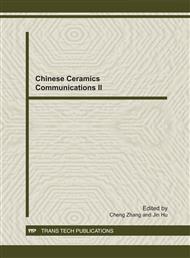p.1
p.5
p.9
p.13
p.17
p.21
p.25
p.32
p.36
Preparation of Flower-Like ZnO Micro-Sphere Powders and their Surface Wettability Modification
Abstract:
Three-dimensitional flower-like ZnO powders were prepared by using a simple aqueous solution method. Their surface wettability was modified via some long chain alkylsilanes with low surface energy. The microstructures and the wettability properties were studied by scanning electron microscopy (SEM), X-ray diffractometer (XRD) and contact angle measurement (CAM). The ZnO powders are spheric and are about 5 micrometers in diameter. The boundary of the microspheres are not smooth, but petaliform in nanoscale, which demonstrate a hierarchical microstructure. The as-synthesized powders have a superhydrophobicity with water contact angle of more than 150°, and have a high adhesion to water. After modified by alkylsilanes, however, the ZnO powders demonstrate a strong anti-adhesion to water. When modified by fluorinated alkylsilanes, the surface of ZnO microspheres had a water contact angle up to 170°. Also, the water droplet could bounce against the surface just like a spring ball, and there are not any water traces left when the water droplets contact the surfaces of ZnO powders. The results provide a simple method to repel the water wetting and will be helpful to disperse the powders especially in a humid environment.
Info:
Periodical:
Pages:
17-20
Citation:
Online since:
November 2011
Authors:
Price:
Сopyright:
© 2012 Trans Tech Publications Ltd. All Rights Reserved
Share:
Citation:


